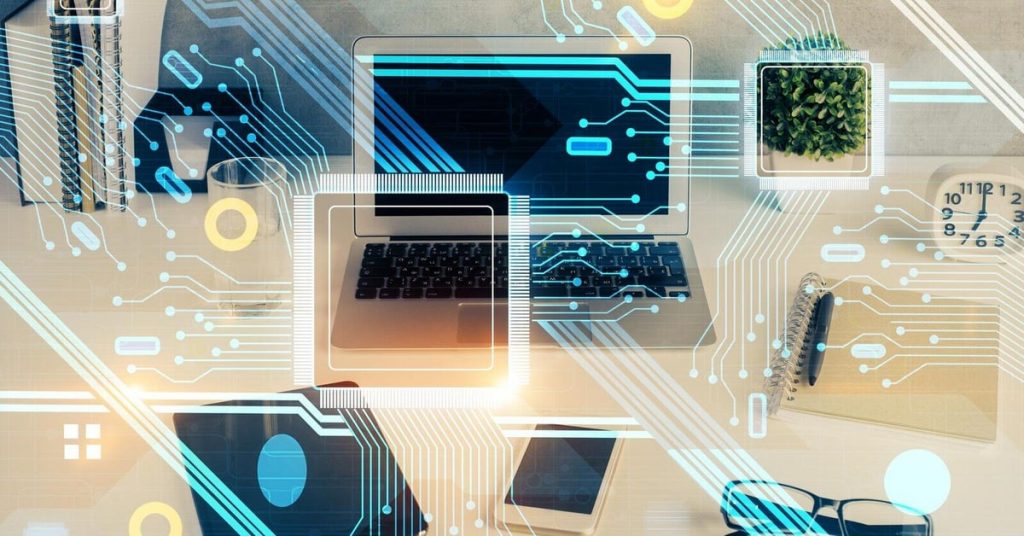
Have you ever thought about how technology influences itself? From AI to automation, explore how these advancements are shaping our world and what it means for the future.
In our fast-paced world, technology grows exponentially and evolves in complexity. This article delves into the fascinating concept of the “technology of technology,” exploring how innovations influence their own development. We’ll examine the role of artificial intelligence (AI), automation, and digital infrastructure. What are the implications of these technologies on society, the economy, and everyday life? Is technology self-advancing, empowering, or employing a blend of both? Get ready to explore the intricate relationship between tools and innovation that shapes our lives.
The term “technology of technology” describes how technologies are systematically interconnected. At its core lies the idea that technology can enhance its own development, often leading to unforeseen innovations. A prime example is artificial intelligence. AI isn’t merely a standalone tool; it can be applied to develop new technologies faster and more efficiently. Think of how machine learning algorithms optimize software coding processes or help automate mundane tasks. This self-reinforcing model fosters rapid changes and breakthroughs.
Furthermore, consider the digital infrastructure that supports these advancements. Cloud computing, for example, not only provides means for data storage but also promotes collaboration and accessibility. Businesses can now leverage complex data analytics without extensive hardware investments. Therefore, what appears to be simply technology is, in fact, a dynamic ecosystem of technologies interacting with one another.
Automation represents a significant stride in the tech spectrum, fundamentally altering various industries. Its essence lies in the use of technology to perform tasks that would typically require human intervention. The implications of automation stretch across sectors. In manufacturing, for instance, robots not only assemble products but also communicate with each other for optimization, showcasing a form of autonomy that allows continuous improvements in production efficiency.
Past decades provide clear evidence of how automation reshapes labor markets. For instance, when automotive factories first implemented robots for assembly lines, they increased productivity but also relocated jobs. However, this shift stimulates job creation in areas like technology maintenance, data analysis, and programming. As tasks become automated, the necessity for skilled workers rises, necessitating a new workforce equipped with different capabilities.
Artificial intelligence (AI) has emerged as a primary catalyst in the technology of technology. Machine learning, a subset of AI, enables systems to learn from data patterns and make informed decisions. This ability paves the way for smarter applications in various fields—from self-driving cars to personalized medicine. As AI technology continues to evolve, it becomes increasingly integrated into everyday tools, enhancing their functionality and user experience.
However, this integration invites complex ethical discussions. The rapid deployment of AI also raises questions about accountability and the potential for bias. Tools designed with inherent biases can propagate unequal treatment in critical areas such as law enforcement or hiring practices. While AI enhances performance and efficiency, it also necessitates a strong focus on ethical guidelines and regulations.
The interconnected nature of technology profoundly impacts both society and the economy. It fosters innovation and often leads to enhanced quality of life. For instance, telemedicine technology has enabled patients to receive health care remotely, especially crucial during recent global health crises. Furthermore, e-learning platforms have provided educational opportunities to millions, expanding their access to knowledge and skills development.
However, this wave of innovation is not without its challenges. As automation replaces certain jobs, the economic landscape shifts, intensifying discussions about job loss and income inequality. Economists argue for the need to adapt the workforce through education and retraining programs, aligning skills with emerging job markets. Therefore, while technological advancements hold immense potential, careful planning is essential to mitigate adverse effects on society.
What does the future hold for the technology of technology? The speed of innovation shows no signs of slowing down. One notable trend is the rise of edge computing, which processes data closer to the source rather than relying on centralized data centers. This shift could reshape industries by simplifying operations and reducing latency—a crucial factor for IoT devices and real-time analytics.
Also, quantum computing looms on the horizon, promising to exponentially increase processing power. The capability to solve complex problems within seconds could revolutionize fields like drug discovery and financial modeling. However, with these advances, new security measures and considerations must also surface, addressing potential threats in a world relying heavily on technology.